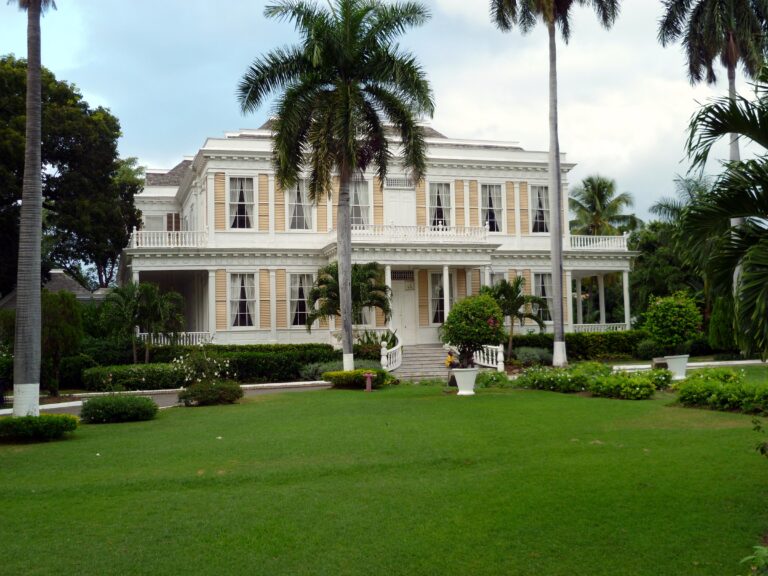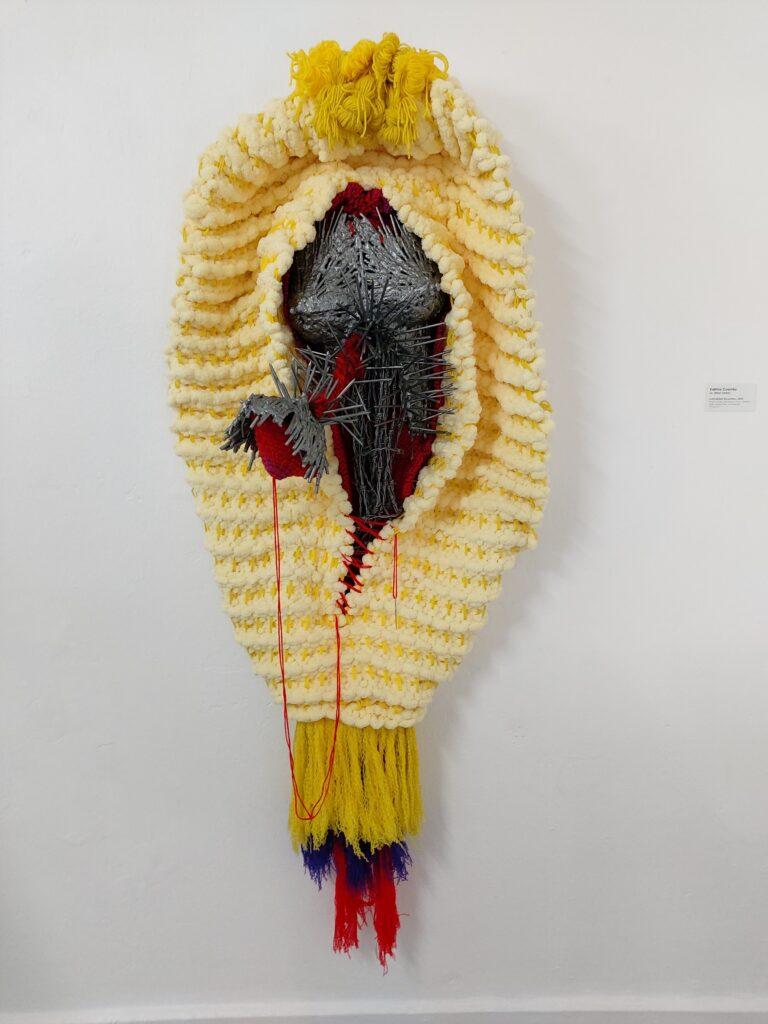Memoir: Dawn Scott’s “A Cultural Object” (1985)

Dawn Scott’s A Cultural Object (1985), a mixed-media installation at the National Gallery of Jamaica (NJG), is one of the most popular and influential works in the museum’s collection. It was created for the National Gallery’s pioneering 1985 Six Options: Gallery Spaces Transformed exhibition, for which six artists were invited to produce installations using subjects and media of their choice in the National Gallery’s exhibition galleries. Curated by Rosalie Smith-McCrea, the then assistant curator, the exhibition featured the Jamaican artists Dawn Scott, Colin Garland, Laura Facey, and David Boxer, and the African-American artists Joyce Scott and Sam Gilliam. The exhibition was the first to feature installation art in Jamaica and the participation of the American artists was supported by the US Embassy. Dawn Scott (1951-2010) was a Jamaican textile artist and interior designer. She is best known, as an artist, for her extraordinary figurative batiks. A Cultural Object was her only installation.
I was a young member of staff in the National Gallery’s Education department at the time of this exhibition and was most excited to be allowed to paint some of the graffiti in Dawn Scott’s installation – my only experience with graffiti to date. Being able to observe Dawn Scott at work on this installation (along with Paul Hamilton, who was an important part of this project) and the public reaction the work has elicited has contributed greatly to my outlook on art in Jamaica. In fact, the whole exhibition was a most exciting, energizing experience and a signal event in the development of contemporary art in Jamaica.
A Cultural Object, which fills an entire gallery, effectively brings the physical and cultural environment of the Kingston inner cities into the “high culture” space of the NGJ. It consists of a spiral-shaped “zinc-fence”, made from recuperated corrugated metal and lumber – the dominant building materials in the local squatter settlements. The surfaces contain the sort of street art, shop signs, dancehall posters, and graffiti that are commonly seen in Kingston’s inner cities. It starts with a large sign that reads “Culture zone, enter at your own risk,” which spoofs the “PNP (or JLP) zone, enter at your own risk” inscriptions that mark the borders of many political garrison communities. The imagery and graffiti on the walls successively deal with popular music, street food, the rum bar, the beauty culture, the attitudes towards women and sexuality, religion, politics and, at the centre, mental illness and homelessness, which takes the form of the reclining, rag-clad figure of a male street person. At first sight, the installation appears unplanned, much like a squatter settlement, but it is carefully orchestrated: the claustrophobic, trap-like spiral corridor deliberately takes the visitor from amusement to horror, when the shockingly realistic street person in the middle is suddenly seen.
A Cultural Object presents a provocative critique of the forces that, according to Scott, trap poor people into their marginalized socio-economic position, including the escapist nature of much of the popular music, poor dietary habits, self-deprecating beauty practices such as skin-bleaching, socially counterproductive attitudes towards women and sexuality, disempowering religious beliefs, partisan political violence, and, ultimately, mental illness and social alienation. Much of its effect derives from its extreme realism and the manner in which the imagery, textures and materials used in this work capture the sensory experiences of inner-city life. The street person sculpture in the centre was made from a live cast (although of an artist’s model) and almost every detail of the work was based on something that then existed in Kingston, which Scott had documented photographically. She used second-hand building materials and techniques that are well-established in the inner-city environment and a defining, although not always well-recognized part of Jamaican material culture.
Already during its original exhibition, A Cultural Object was popular with visitors and elicited strong responses. Most of these were positive but there were also concerns that the work represented Jamaica in a negative light. Despite those objections, the work was acquired for the NGJ collection and reinstalled in a room of its own in the permanent exhibition Jamaican Art 1922-Present. There it quickly became a very popular exhibit, referred to by inquiring schoolchildren as “the Ghetto.”
While A Cultural Object obviously resonates with Jamaican audiences, the public response has always had a sensationalist, anarchic edge. Visitors almost immediately started adding their own graffiti to the walls and while the artist initially accepted this de facto interactivity, the results have been unexpected and often disturbing. Most of the graffiti are simply juvenile – of the “Kilroy was here” variety – but many others are obscene or politically partisan and illustrate exactly those cultural attitudes Scott sought to critique. Even the “street person” sculpture has been vandalized – one of its legs was broken, which sadly mimics the abuse street people sometimes encounter in Jamaica – and the, at times, unpleasant smell illustrated that some even urinated inside the installation.
A Cultural Object represents an instructive crack in the institutional armour of the NGJ. Elsewhere in the galleries, most visitors spontaneously behave in the disciplined and reverential manner that is the norm in museums. Somehow, the material and cultural ambiance of A Cultural Object suspends this disciplinary environment, in a way that reminds of how the presence of graffiti, broken windows, and derelict buildings contributes to social breakdown in urban environments, as has been observed in cities such as New York and, for that matter, Kingston. Tellingly, this breakdown has not spilled over into the adjoining galleries, which maintain the decorum of a traditional “high art” museum environment – the graffiti literally stop at the edge of A Cultural Object’s gallery space. Powerful and popular as it is, A Cultural Object, thus, also raises questions about artists’ ability to direct audience responses and, thereby, the effectiveness of social criticism in contemporary art. Be that as it may, it is a fascinating and very powerful social and cultural experiment which has influenced several young artists in Jamaica, such as Ebony G. Patterson and Matthew McCarthy.
A Cultural Object is not open to the public, as the National Gallery’s permanent collections have not yet been reopened. A Cultural Object furthermore needs conservation due to deterioration of the fragile materials used and public interference and had been closed from earlier on for that reason. I understand that the plaster central figure was restored by the Jamaican sculptor Raymond Watson, but the rest of the installation is awaiting conservation. I hope that the restoration will be completed soon, as it is a key work in Jamaican and Caribbean art history that the current generations should be able to visit and experience.
Dr Veerle Poupeye is an art historian specialized in art from the Caribbean. She lectures at the Edna Manley College of the Visual and Performing Arts in Kingston, Jamaica, and works as an independent curator, writer, researcher, and cultural consultant. Her personal blog can be found at veerlepoupeye.com.






